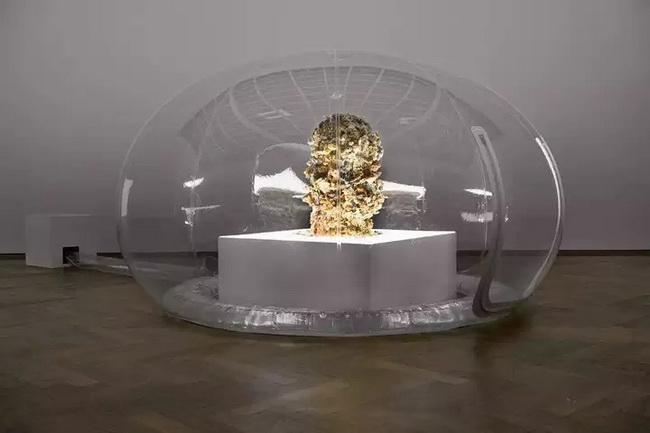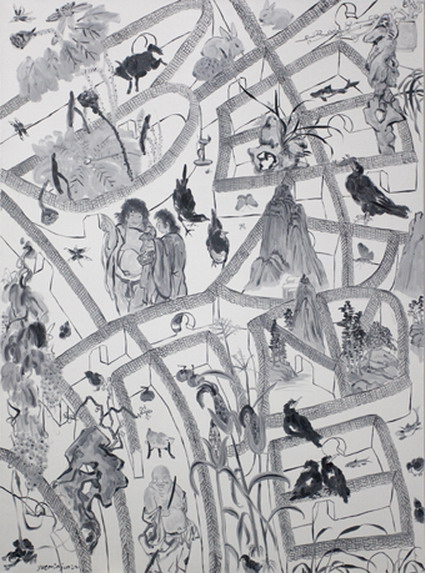
岳敏君参展作品_陈师曾_Chen Shizeng 布面油画_Oil on canvas_150cmX200cm_2011
祁志龙作品 缪晓春《Restart-3山上众神》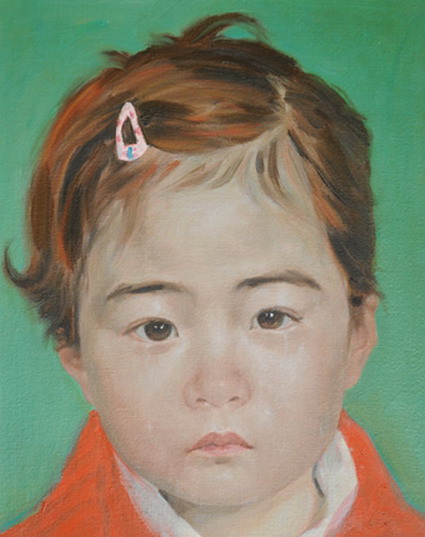
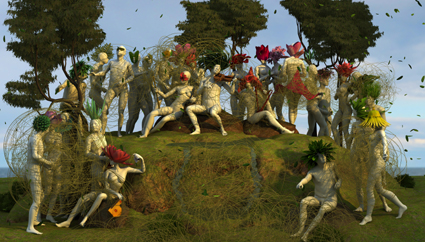
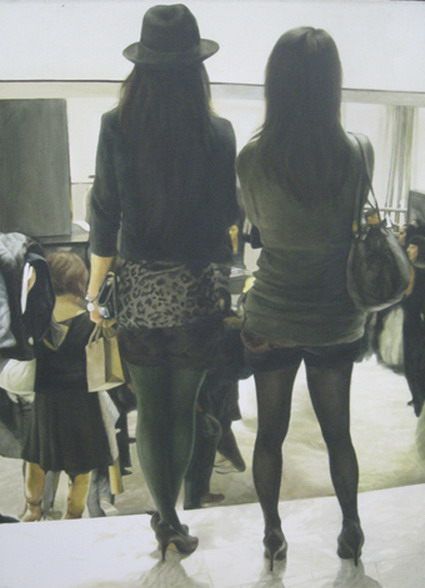
何云昌《北京时光.时秀》
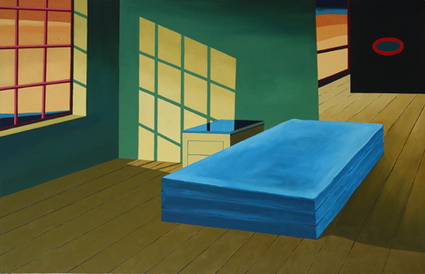
刘港顺《下午三点》 177x260cm 布面油画 2009
许仲敏《蛋形 NO.2》Egg Shape No.2,,2006 杨茂源 《佛》 何森 2011西游记之顽皮的小鸟200+200cm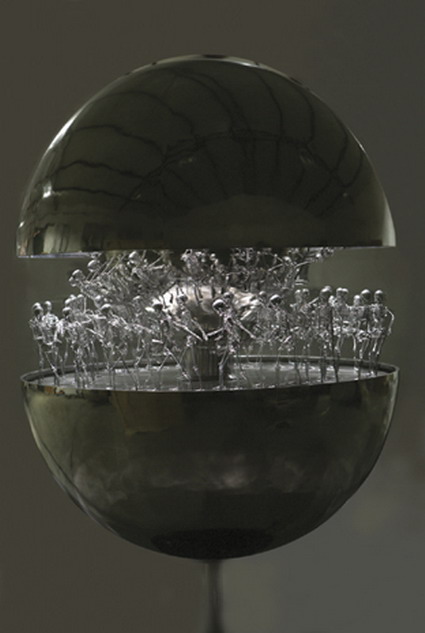
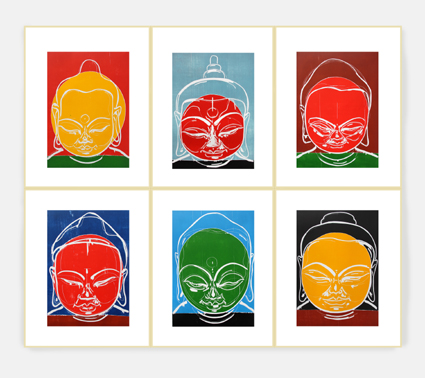
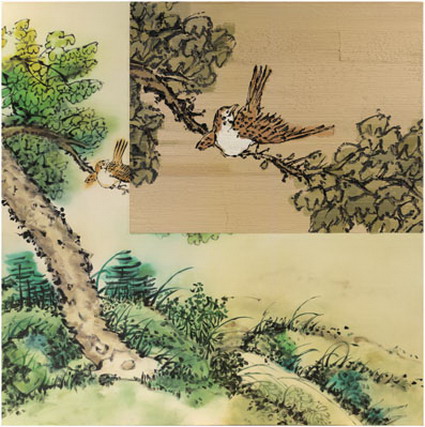
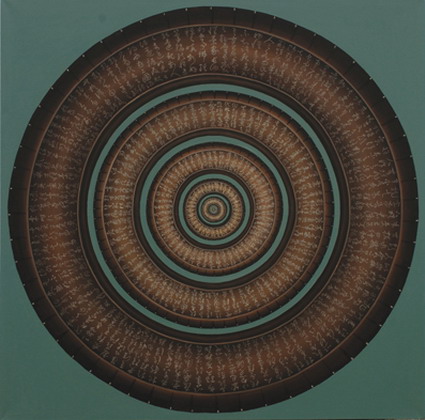
杨坚作品
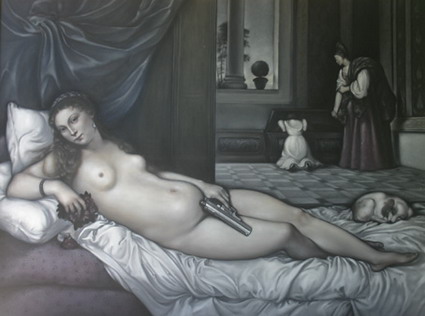
原国镭作品
展览现场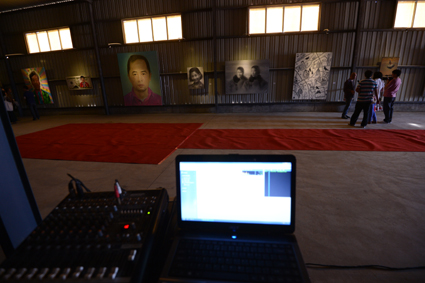
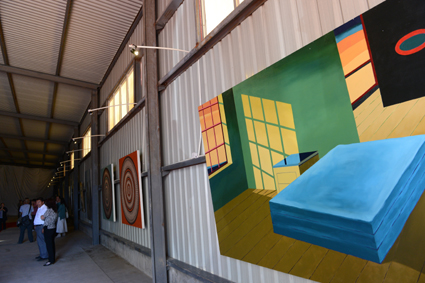
展览现场 展览现场 展览现场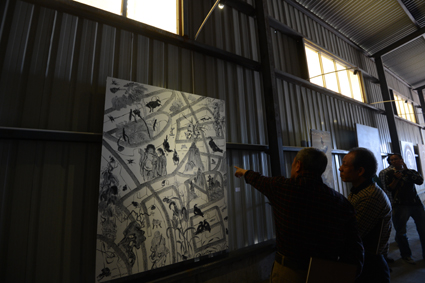
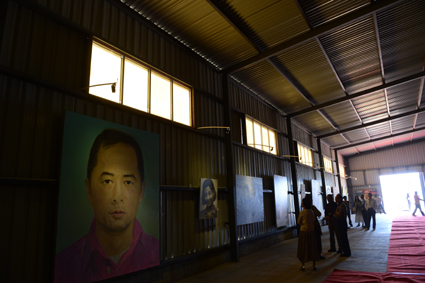
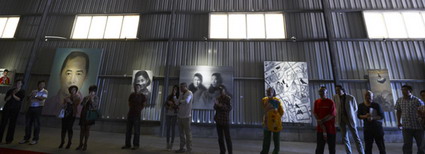
展览现场
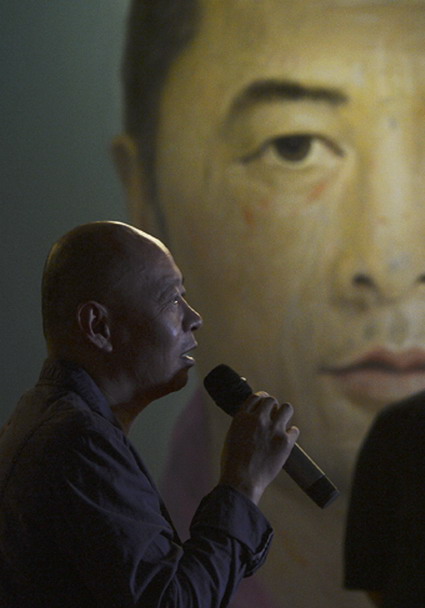
岳敏君
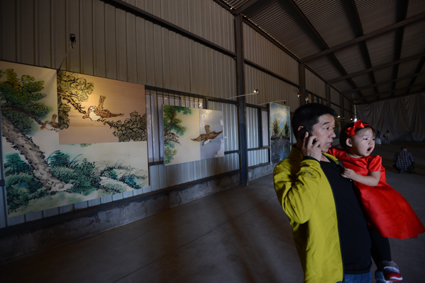
何森
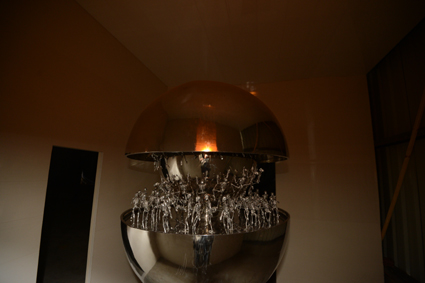
展览现场
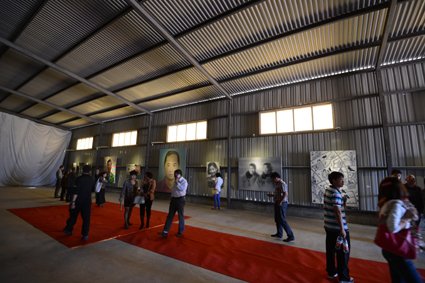
展览现场
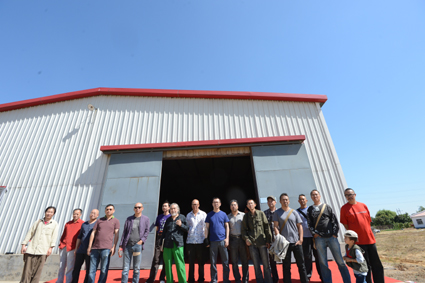
艺术家合影
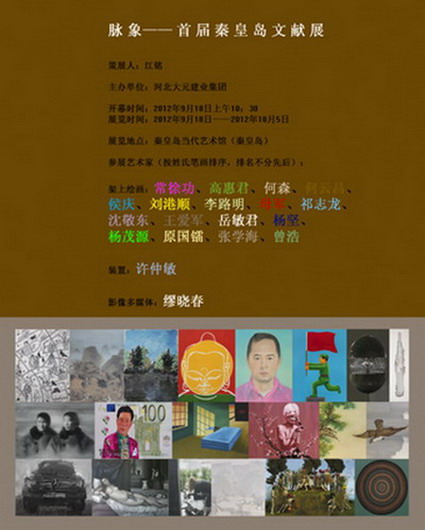
脉象——首届秦皇岛文献展 Exhibition Plan Curator: Jiang Ming Opining Time: 10 A.m. of 18 September 2012 Artists (Ranked in no particular order, other than alphabetic order): 文︱江铭 在我们大众的美学教育中,曾经被告知:文化艺术是时代的反映。实际上,真正对文化的进程造成影响的文化艺术是时代的前趋。这是历史告诉我们的知识。任何一个时代总会有一部分先锋人物在各个领域中都跑在了时代的前面。这种前趋性并不是他们超越了时代,而恰恰相反,正是他们的尝试才代表了一个已经来临并正在诞生的新时代。在文化艺术领域也是如此。他们的艺术及其风尚不仅改变了旧时代的美学秩序,而且还引领新时代的精神不断再向前。 中国当代艺术20、30年来的发展历史清晰印证了这样的经验。 今天在中国北京、上海、广州这样的中心城市,文化艺术圈中若有人不曾看见过、接触过当代艺术,那简直就有点像满清的遗老被民国所抛弃, 像文革的造反派被改革开放所淘汰一样。北京798、宋庄、草场地艺术区,如今不仅是文化知识分子们经常光顾的地方,甚至已经成为公众旅游观光最感兴趣的地方。 然而,文化艺术的传播有一个从小圈子向公众,从中心向外围扩散的规律,就像地震波一样总是以同心圆向四周扩散。而文化现象的发生也是如此,它总是从文化的中心城市向边缘城市渐进式地传播。当边缘城市将某种文化现象当作先锋文化在谈论之时,其实它已经在文化中心多年之前就已经发生了。 今天,我们所谈论的当代艺术的历史,实际上还处于一种模糊状态,我们所获知的其实还是一些片断、一些存在诸多争议的现象学,一只生死叠加的“薛定谔之猫”①。 中国社会今日之状况看似乱象环生,各种思潮、价值观纠缠不清,让无数的人心乱情迷,茫然无序,仿佛被一种无边的法力抛弃到茫茫的海上,找不到一盏能够指向彼岸的灯塔。然而,我们的认知如果足够清醒,那么在纷繁错综的乱象之中,一定也有着一些清晰的秩序与规则。 今日中国社会的文化生态在历史的脉络上,我以为是建立在三大文化传统和一种现实情境之下。三大文化传统是指:一、中国的传统文化传统(即以儒释道为框架的传统文化系统);二、毛泽东文艺的传统(1949年新中国建立后逐渐完善的毛泽东文艺路线及其所形成的革命文艺的传统思路);三、邓小平改革开放所形成的中西融合与折中的传统。这三大传统对中国现阶段文化生态产生了无法规避的影响,渗透到了文艺创作的各个领域。今日中国的文化创新与演化无不以这三大传统作为主要的资源。其文艺作品的表现及其倾向也都是继承和扬弃了这三大传统的诸多内容。 而一种现实情境则是指中国人人性内在的功利主义本质。中国人的勤劳刻苦是由于其生存环境所决定的。低端的生产技能与缺少福利保障的现实使得中国人的勤劳,是世界上其他民族无法相比的。而知识分子勤奋刻苦的努力也没有几个是真正的追求真理与精神价值,大多数我们世俗意义上的知识分子读书的目的都是为了获得一种荣耀(传统社会更明显),获得未来生存更大的资本(现在社会更突出)。这样的一种功利主义的本质也就证明了为什么在中国人的精神性上没有宗教感。传统意义上的中国的道教、佛教的庙宇、典礼、以及儒家应用于皇权的仪式在情感上触动的只是中国人的美感与想象,而不是触动中国人内在的心灵与灵魂。其实,并不是中国人没有宗教感,而是中国人没有强烈的宗教需求的愿望。这样一种没有宗教感的现实功利性与统一性,在本质上正是中国社会艰难的生存状况所决定与形成的。 所以我们在研究与观察今日中国文化艺术现象及历史问题时,都只能从这三大传统与一种现实情境的框架中寻找根据。离开了这四种因素也就离开了中国文化研究的基本脉络,其阐述与言说基本也就是张冠李戴。 我们用脉象一词作为这次展览的主题,借用医者诊脉之道,以察阴阳,决生死,知天寿。而艺术家则是借用作品之精神以断生命、社会、现实之脉象。这次展览的综合性形式也是在这个基本框架的思路上选择了一些在30年当代艺术发展历史中有说明意义的一些艺术家的作品来勾画出中国新文化的一种脉象。 注释①“薛定谔之猫”:1935年奥地利理论物理学家埃尔温•薛定谔(Erwin Schrodinger)提出的关于量子物理学的一个理想实验。往一个密闭的箱子里面放入一小块铀、一个盛毒气的玻璃瓶、一只受检测器控制的锤子以及一只健康的猫。于是对于观察者来说,箱子里面的猫处于“生死叠加”的状态。因为我们无法预测铀的衰变时间。它可能此时正在发生,也可能在未来的任何时刻发生。 作品阐释:(随机撰写,不分先后) 传统中国书画经过千年的时间构筑了趣味美学的迷宫,岳敏君则从这座庞大的迷宫走出来,重新在当代的观念游戏中构筑起另外一座迷宫。 何森从青春的自伤中出走,企图借用传统中国书画与西方油画的语言重新找到一条自由往返于东西方各自神界的路径。 高惠君始终坚持在东西绘画系统中寻找折中的道路。在绝大多数艺术家完全抛弃中国传统书画系统的探索时,高惠君却始终相信东西方文化之间一定会有一个混血的私生子要借腹诞生。 杨坚的轮胎系列将传统书法涂写其中,借以隐喻了传统与现代生活的尴尬关系。在这种关系中,传统要么被抛弃,要么就复活后重新吃掉现代的脆弱生活。中国知识分子骨子里面的儒家性格与现代社会的竞争性格形成鲜明的反差与尖锐的对立。 杨茂源的作品借用佛的诸相,寓意了现代人生活以及精神中的种种悖论。面对这些作品,我们不禁要问,在这个混乱的时代,什么样的信仰才是拯救我们的救命稻草?佛法无边,但是面对这个妖魔鬼怪丛生世界,一声:阿弥陀佛!就真的能够拯救吗? 许多同时代的艺术家企图通过花样繁多的变形、并置、替换、改装来证明对历史的修辞性想象,李路明却不再涂改与评判,而是以个人的历史来理解历史。通过对他青春时代的日常化生活场景的经验性描述,回避任何主观的价值判断,从而使得两个时代的价值准则同时失效。 何云昌的行为具有震撼我们心灵的内在力量。其中的无效性意义是对我们人类的乌托邦梦想的质疑与嘲讽。而他的这组新油画则是对我们日常性生活经验的批判性描述。 常徐功的作品是80年代至2000年以来中国农民命运变迁、身份变迁、乡村与城市流动与融合的时代变迁的艺术象征。这些作品从不同的角度反映了不同阶段中国农民受到的整个世界及时代变化的深刻影响。 张学海的作品通过对工业化的象征产品——汽车的冷酷描述表达出当代社会的一种“失控”状态,这种钢铁般冰冷的状态正在控制和牵引着人类向着更加快速的疯狂的非理性的“进步”方向前行。而由此引发出人类精神、物质各个方面的全面危机和破坏。 原国镭的作品具有一种基督教的原罪情结,这是我对他作品的总体感觉。无论是表现暴力还是色情。在他的作品中,我们都能够感到人类“原罪”的存在。 母军的作品为我们引出了一个有趣的现实困境问题。由于人的不完美性,所以人类发明了化装术,用以改变自己;由于现实生活的困境和不圆满,所以人类需要乌托邦,需要粉饰现实,需要伪装自己。 曾浩作品中无论是人还是物,都是孤独的,他将他们放在那空旷的背景中的时候,孤独将他们融合在一起构成一个诡异的魔幻的世界。在那些画面上空间与时间形成一种特殊的关系,这种关系预示了现实的危险性。 侯庆这些作品看似很唯美的风景——荷,即暗喻了他对现实所选择的逃避与拒绝,像伯夷叔齐,也有他时常审慎的融入与面对,像苏东坡、白居易。这种游离于庙堂与江湖的态度都是缘于现实的不完满。在侯庆的内心他更可能向往江湖的旷达与自由,但是现实的责任又使他无法逃避,那么面对也许是他不情愿的选择。 刘港顺的作品是针对西方艺术历史的重新研究。他权充、复制、挪用、移情了这些经典的图像,来隐喻他对于当下的质疑。而这些图像被重新呈现的意义在于我们在当下面临着与他者相同的焦虑与问题。 祁志龙是上个世纪90年代中期“后波普浪潮”的代表人物。预示了中国社会从精英文化时期向商业消费文化时期的社会性转型。他的作品准确把握了商业文化的内在规律,具备时代的象征意义。消费时代的精神是煽情的,具有性诱惑力的。但是祁志龙的最新作品——自画像却又正在向现实主义的精神的自我性转型。 沈敬东的作品也是典型的后波普作品。他利用被他艺术化的解放军形象表达出他对于消费时代国家机器的某种“异化”现象。而将革命文艺的典型形象,甚至国家武装力量的标准形象都转化为消费形象,正是中国后波普艺术家对世界艺术历史的特殊贡献。 王爱军的作品通过对玉石把玩性地描述,来暗喻了中国社会权贵文化中特殊的审美趣味。在这种趣味的背后是我们无法面对的问题。 许仲敏的作品通过动感机械的工业模型,将宗教意义上的自我拯救与现代社会的生存问题纠结在一起,在这种纠结中,精神与肉体、当下与历史、时间与空间都不在可控的轨道上运行了。于是一个新的经验被打开了,或许我们可以看到些什么! 缪晓春作品利用计算机的三维技术制作的一个场面宏大的“天国”场景,铺天盖地的虚构的人物来自何处又将面临怎样的选择,没有谁能够判断,人类是否终将面临最后的审判呢?这是一个问题! Written by Jiang Ming In the public aesthetic education, we were told that the culture and arts were the reflection of time. In fact, the culture and arts which have actual impact in cultural development are the precursors of time. It is the truth told by history. There are always some pioneers that ahead of the time in every era. The leading character does not mean that they have surpassed the time; on the contrary, it is just their tries that proclaimed the birth of a new era. And so it is in the area of culture and arts. Their arts and styles has not only changed the old esthetics order but also led the way of new era spirit. Over the past 20 to 30 years, the development of Chinese contemporary art has clearly confirmed this experience. Today, in those central cities in China, like Beijing, Shanghai, Guangzhou, if there is someone that hasn’t seen or been in contact with contemporary art, they will be abandoned and eliminated by the time, just like those adherents of Qing Dynasty and those rebels in the Culture Revolution. Beijing 798 Art Zone, Songzhuang and Caochangdi Art Zone have been the perfect places to patronize and visit for cultural intellectuals and the public. Yet, the spread of culture and arts has a center– periphery model. It is always spread from one circle to the public, just like the earthquake wave. And so it is in the occurrence of cultural phenomenon. It will gradually propagate from central cultural cities to edge cities. Long before a cultural phenomenon is discussed like one pioneer culture in an edge city, it occurred in the center cities. Today, this history of contemporary art is actually in a fringe state. All we know are just some fragments, some controversial phenomenon, and a dead-and-alive Schrodinger’s cat. ① It seems that the current situation in China is disorderly and unsystematic; all kinds of thoughts, values and beliefs tangle together. People get lost and confused. Like an individual has been put in the big ocean by some super power and there is no lighthouse could lead the way out. However, if we stick to our cognition, we could find some clearly orders and rules in this disorder. In historical proceeding, to the author, the current cultural ecology of Chinese society is based on three traditions and one real circumstance. The three traditions are: first, the traditional Chinese culture, which built in Confucianism, Sakyamuni, and Taoism; second, the tradition of Mao Zedong’s artistic thought, which refers to Mao Zedong’s literary route that is gradually formed after the establishment of Communist China in 1949 and revolutionary literature; third, the tradition of combining of east-west style after the Deng Xiaoping’s Reform and Open Policy. These three traditions reined unavoidable influence on the current cultural ecology in China and has penetrated into every field of cultural creation. Nowadays, in China, all the cultural creation and evolution are primarily based on the three traditions. And the expressions and tendencies of literary and artistic works inherit and abandon many contents of the three traditions. As referred to one real circumstance, it means the nature of utilitarianism which is inherent in Chinese humanity. Chinese people used to work hard so as to survive from their living environments. The reality of low-tech production skills and lack of social welfare makes Chinese people to work hard, which is incomparable for other peoples in the world. Few intellectuals work hard to pursuing truth and spiritual values. The reading goal of most intellectuals in secular sense is to gain glory, which is more obvious in traditional society, or to get more capital for future survival, which is more obvious in modern society. This nature of utilitarianism also justifies the problem that why Chinese people have no sense of religiosity. Those traditional temples and ceremonies of Taoism and Buddhism, those imperial ceremonies came from Confucian touch Chinese people only in their aesthetic feelings and imaginations not in their sprits and souls. To be specific, it is untruth that Chinese people has no sense of religiosity, it is truth that Chinese people have no strong desires for religion. In nature, this kind of realistic utilitarianism with no sense of religiosity and unitarily is decided and formed by difficult social living conditions in China. So when we study and observe current Chinese culture and art phenomenon and history problems, we can only search for reasons from the three traditions and one real circumstance. Once we leave the four factors, we leave the basic vein for Chinese culture study and the elaborating shall be nothing but mistaken. We used “pulse manifestation” as the topic of our exhibition. Doctors of traditional Chinese medicine know the condition of a patient through his pulse manifestation, to know Yin and Yang, life and death. We borrow this meaning here. Artists know the pulse manifestation of the lives, reality and society with the spirits of their works. Upon this basic framework of thoughts, this exhibition chooses those works of artists that have illustrative significance in contemporary art history of past thirty years, so as to outline the pulse manifestation of new culture in China. Note: ①Schrodinger’s cat: Schrodinger’s cat is a thought experiment, sometimes described as a paradox, devised by Austrian physicist Erwin Schrodinger in 1935. It illustrates what he saw as the problem of the Copenhagen interpretation of quantum mechanics applied to everyday objects. A cat, a flask of poison and a radioactive source are placed in a sealed box. If an internal Geiger counter detects radiation, the flask is shattered, releasing the poison that kills the cat. To the observers, the cat remains both alive and dead until the box is opened. Because we cannot predict the exact time of radioactive decay of the radioactive source, it can be happened in now or any time in the future. Elaborating of woks (In no particular order): He Sen, who comes out of the self-injury of youth, tries to find a path that can come and go freely from eastern and western paradise by using the language of traditional Chinese painting and calligraphy and western painting. Gao Huijun always insists in find a middle way in eastern and western painting systems. When most of the artists have completely abandoned the exploration of traditional Chinese painting and calligraphy system, he always believes that there must be a hybrid child, the progeny of the eastern and western culture, come into being someday. In the series of tire, Yang Jian tries to write traditional Chinese calligraphy inside the tires, so as to use the metaphor that the awkward relationship between the traditional and modern life. In this relationship, traditional is abandoned or eats the fragile modern life after its resurrection. It shows the great contrast and sharp opposition between the Confucian characters that bone in the Chinese intellectuals and competition character in modern society. In Yang Maoyuan’s works, he implies all kinds of paradox in modern people’s lives and spirits by using all forms of the Buddha. Facing with these works, we can’t help but to ask, in this chaotic time, what kind of belief is the life-saving straw for us? The powers of the Buddha are unlimited. But facing with this world which full of evils and bugaboos, does it really helpful to speak out an Amitabha? When those contemporary artists try to prove their rhetorical imaginations of history by using various techniques like deformation, juxtaposition, replacement and modification, Li Luming tries to understand the history with his personal history and without any correction and judgment. By using those empirical descriptions of his daily youth life scenes, he manages to avoid any subjective value judgment, which caused the value standards of two generations become invalid simultaneously. He Yunchang’s behavior has a strong heart-shocking power. The ineffectivity is the question and satire of our human dream of utopia. His new oil paintings are the critical description of our experiences in daily life Chang Xugong’s works are art symbols of changes of Chinese farmers’ destinies and identities, changes of the mobility and integration of rural and urban population from 1980s to 2000. These works reflect in different angles the profound influence that Chinese farmers suffered from the change of the whole world and times in different stages. Zhang Xuehai’s works show the out of control condition of contemporary society by using the cold character of the car which is symbol product of industrialization. This kind of iron icy cold state is leading and controlling human beings towards a more rapid, crazy and unreasonable progress direction, which causes comprehensive crisis and destructions of all aspects of human spirits and materials. Yuan Guolei’s works have kind of Christian original sin complex. This is my general impression of his works. In his works, no matter the expression is violence or pornography, we can feel this human original sin. Mu Jun’s works draw out an interesting realistic y dilemma. Because of imperfection of human being, man invented costume to change himself. Because of the difficulty and imperfection of life, human need utopia, need whitewash of reality and self-disguise. In Zeng Hao’s works, whether people or goods, are lonely. He put them in the open background lonely, which together constitute a tricky magic world. In those screens, space and time form a special relationship that indicates the risk of reality. Hou Qing’s works are about the very beautiful lotus, which imply his escape and rejection of reality, just like Boyi and Shuqi. However, there are signs of faced with and blended in the reality. In old times, Su Dongpo and Bai Juyi chose to be outside of politics and reality to show their unhappy with reality. Deep inside Hou Qing’s heart, he wants to be free and be outside of the reality. But he cannot ignore his responsibility of reality; he could only reluctantly choose to face with. Liu Gangshun’s works show his restudy of western art history. With these techniques of using, copying, diverting and empathizing classic images, he implies his question of current society. The meaning of his works is that we are facing with the same anxieties and problems as in the past. Qi Zhilong is one representative of the Post-Pop Wave in middle 1990s. During that time, Chinese society had changed from elite culture to commercial consumer culture. Qi’s works accurately grasp the inherent regular pattern of the business culture and have the symbolism of the era. The time of consumption is melodramatic and sexy. But the latest work of Qi Zhihong, the self-portrait, shows the transition to the spirit of realism. Shen Jingdong’s works are typical post-pop works as well. By using those artistic liberation army images, he expresses the alienation phenomenon of state apparatus in time of consumption. These typical images of revolutionary literature and consumption images of standard state armed forces are Chinese post-pop artists’ special contributions to art history. Wang Aijun’s works implies the special aesthetic interest of Chinese dignitaries by using the description of playing jades. Behind this special aesthetic interest is the problem we can’t face with. Xu Zhongmin’s works show us an entanglement of religious self-saving and survival problems in modern social by using those dynamic and mechanical industrial models. In this entanglement, spirit and body, now and history, time and space are all orbiting in an uncontrollable circle. A new experience has been opened, maybe we can see something. Liao Xiaochun’s works show us a grand scene of Heaven with the help of 3D computer technology. Where do those overwhelming fictional characters come from? What choices will they face with? No one can give the exact answers. Will people face the final judgment? This is a question!
策 展 人:江铭
开幕时间:2012年9月18日上午10:00
展览时间:2012年9月18日——2012年10月5日
展览地点:秦皇岛当代艺术馆(秦皇岛开发区天山北路或军分区西第一个红绿灯右转200米))
参展艺术家(按姓氏笔画排序,排名不分先后):
架上绘画:常徐功、高惠君、何森、何云昌、侯庆、刘港顺、李路明、母军、祁志龙、沈敬东、王爱军、岳敏君、杨坚、杨茂源、原国镭、张学海、曾浩
装置:许仲敏、
影像多媒体:缪晓春
Name: Pulse Manifestation—— First Qinhuangdao Document Exhibition
Exhibition Date: 18 September 2012 to 5 October 2012
Venue: Museum of Contemporary Art Qinhuangdao
1.Easel Paintings: Chang Xugong, Gao Huijun, He Sen, He Yunchang, Hou Qing, Liu Gangshun, Li Luming, Mu Jun, Qi Zhilong, Shen Jingdong, Wang Aijun, Yue Minjun, Yang Jian, Yang Maoyuan, Yuan Guolei, Zhang Xuehai, Zeng Hao
2.Equipments: Xu Zhongmin
3.Video and Multimedia: Liao Xiaochun
三大传统与一种情境
——首届秦皇岛文献展综述
Three Traditions and One Real Circumstance
——For the First Qinhuangdao Document Exhibition
After millennium development, traditional Chinese painting and calligraphy has built an interesting aesthetics labyrinth. Yet, Yue Minjun walks out from this vast labyrinth and construct another maze by using contemporary concepts.

